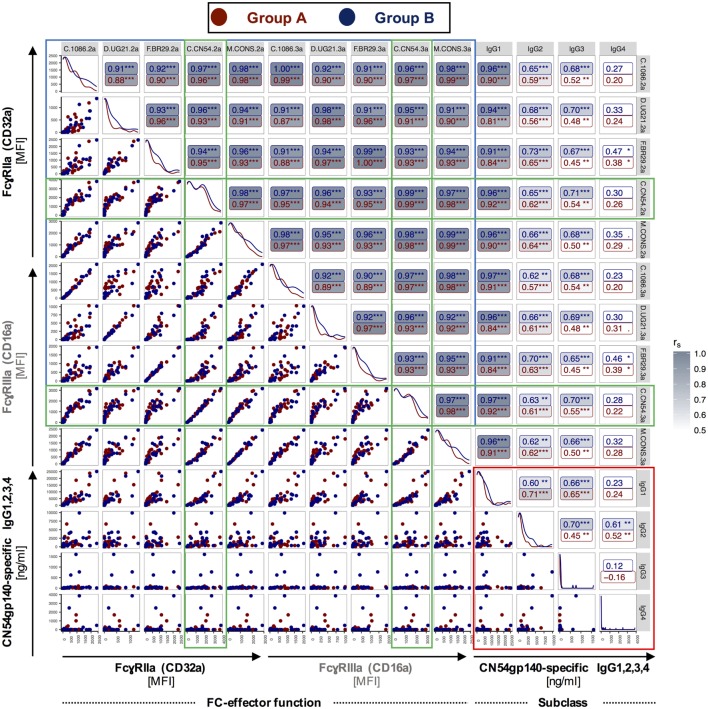Figure 6.
Correlations between CN54gp140-specific IgG subclass measurements and FcγRIIa (CD32a)/FcγRIIIa (CD16a) binding profiles for Group A and B. A customized multiplex assay was used to determine binding of dimerized FcγRIIa or FcγRIII following binding to different human immunodeficiency virus (HIV)-clade proteins in serum samples from Group A and B. For simplicity, the horizontal and vertical labels, indicating the various HIV-clade proteins, were labeled with the ending .2a or .3a, respectively, to designate FcγR dimers. Correlations between CN54gp140-specific IgG subclasses are boxed in red, and correlations between FcγRIIa/FcγRIIIa binding profiles are boxed in blue, while correlations directly related to the CN54gp140 antigen, which was used for serial immunizations, are boxed in green. C.CN54gp140-mediated engagement of both FcγRII- and FcγRIIIa-receptors was positively associated with CN54gp140-specific IgG1/2 in both groups. Both study groups exhibit identical isotypic and FcγR-binding profiles. rS—Spearman’s rank correlation coefficient (*p < 0.05, **p < 0.01, ***p < 0.001).

